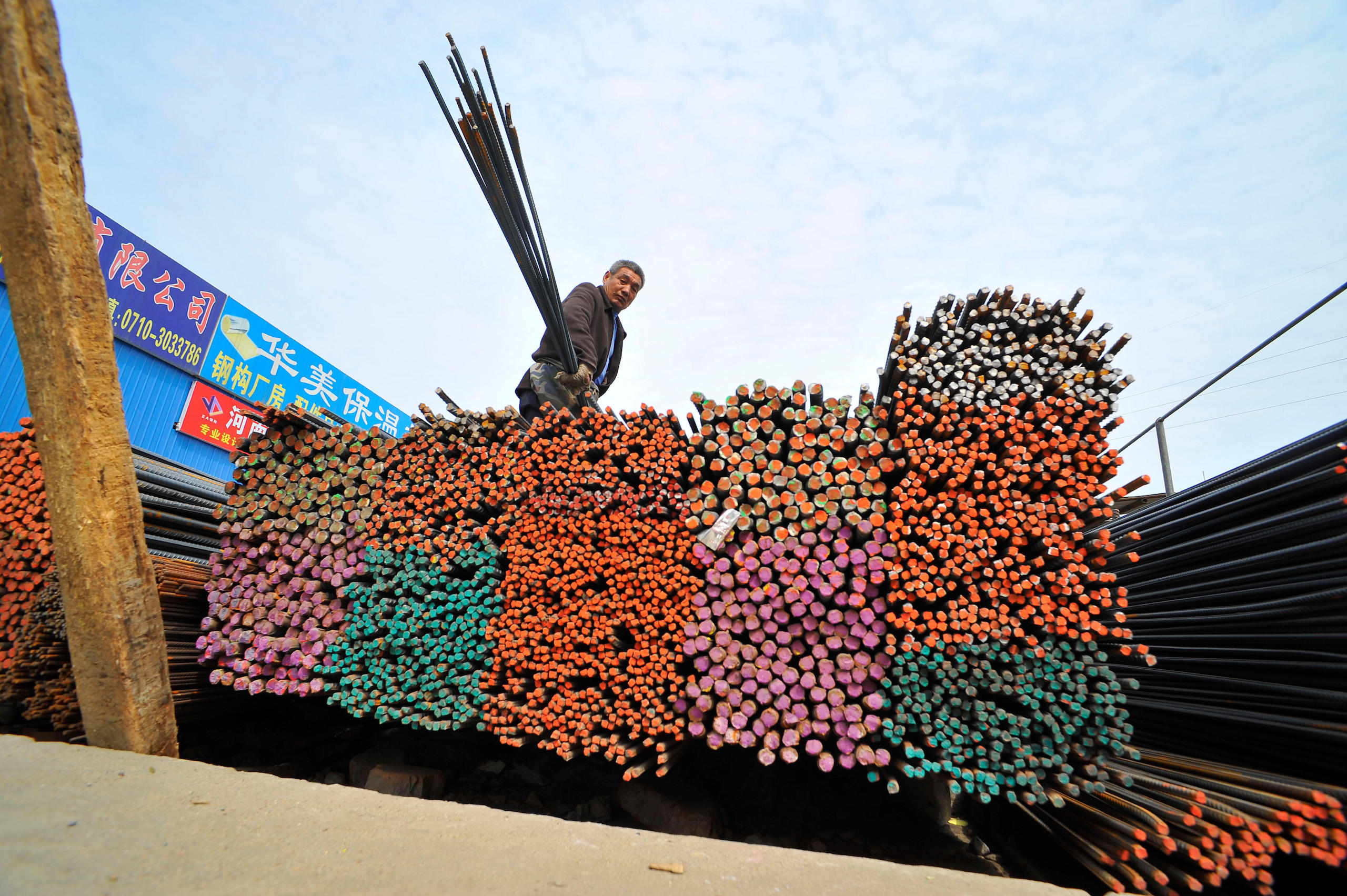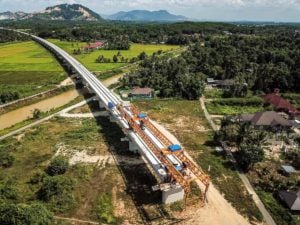China’s national emissions trading scheme (ETS), which turned two in July, has largely met its opening goals, experts have told China Dialogue. These were to build market awareness, set up trading mechanisms, and guide companies to pay attention to their emissions.
But the nascent market still faces many roadblocks, such as problems with data integrity and lack of effective legislation, they added.
China’s ETS, the world’s largest of its kind in terms of emissions regulated, covers companies that together emit three times more than those covered by the European Union’s ETS. The central government considers it one of its “core policy tools” for achieving the national climate goals announced by President Xi Jinping three years ago: to peak carbon emissions before 2030 and reach carbon neutrality before 2060.
The market covers China’s power sector, which accounts for the most emissions. The plan is to at some point bring in other heavy emitters, such as iron and steel, petrochemicals and building materials.
The central government is also due to revive the country’s voluntary carbon credit system by the end of this year. This step will facilitate power companies to offset their emissions and allow stakeholders in other industries to participate in the national carbon market, experts said.
Expectation ‘largely met’
After a decade of preparation, China’s national ETS went online in July 2021. Officials from the Ministry of Ecology and Environment (MEE), which is in charge of the market, have expressed satisfaction with its performance so far.
Li Gao, director-general of the MEE’s Department of Climate Change, told the 21st Century Business Herald, a Chinese financial newspaper, that the market has “basically met” the government’s expectation. Its operation has been “stable”, its regulations “improved comprehensively” and its method for allocating rights to emit “optimised constantly”, Li said.
The market’s pricing mechanism is “gradually showing its effect”, noted Lai Xiaoming, chair of Shanghai Environment Energy Exchange, which runs the market’s trading platform. Companies’ awareness of reducing emissions has been “effectively raised”, Lai said at a conference marking the second anniversary of the ETS.
240 million tonnes
of CO2 traded as ‘allowances’ on the national carbon market in the two years since it opened – around 2% of China’s emissions in 2021
The MEE currently hands out free emission “allowances” to power companies. These give firms the right to emit a certain amount of CO2 and are calculated based on emissions intensity, meaning the volume of emissions per unit of output. If a company emits more CO2 than their allocated allowances can cover, it must buy more allowances from the market.
Although the national ETS has been running for two years, it has only completed one “compliance period”. During the first compliance period, 1,833 companies handed in enough allowances from July to December 2021 to cover their emissions for 2019 and 2020, while 178 firms partly covered their emissions, the MEE said. The compliance rate of allowances reached 99.5%, it noted.
Power companies are now in their second compliance period. This requires them to account for their 2021 and 2022 emissions, and will finish at the end of the year.
As of 14 July, a total of 239.9 million tonnes of emissions allowances had changed hands on the market and the cumulative turnover had reached 11.03 billion yuan (US$1.54 billion), according to the latest statistics.
Both figures are dwarfed by those of the EU ETS, which has been running for nearly 20 years. In 2022 alone, it saw the trading of 12.5 billion tonnes of emissions allowances and registered a record-breaking 865 billion euros ($958 billion) turnover, according to Carbon Market Year in Review 2022, published by Refinitiv, a provider of financial markets data and infrastructure.
“The liquidity of the national carbon market is low and seasonal. Transaction levels are usually low,” Zhang Jianhong, executive director of the Environmental Technology and Economics Branch of the China Society of Technology and Economics, told the Securities Times, a Chinese financial newspaper.
Because most companies only buy or sell allowances to fulfil their market duty, transactions tend to concentrate near the end of each compliance period, leading to “imbalanced” trading activity and a slow market most of the year, Zhang explained.
The market has “some issues” that need resolving, Huang Ming, executive director of the Research Centre of Sustainable Development at Fudan University, told the same newspaper. “For example, the transaction volume needs to be boosted, market coverage is relatively narrow and trade products need to be expanded,” Huang noted.
Building market awareness
There is a consensus among the experts spoken to by China Dialogue that the short-term goal of the national carbon market isn’t to yield instant and obvious emissions cuts, contrary to the expectations of some critics.
Instead, it aims to let stakeholders understand the concept of carbon trading, guide them to monitor, report and verify their emissions, and show them the benefits of doing so, the experts say.
One key mission is to help businesses realise that emitting CO2 costs money and reducing emissions can help save money, Chen Zhibin, senior manager for carbon markets and pricing at adelphi, a Berlin-based thinktank, tells China Dialogue.
Chen says that, currently, the main function of the national carbon market is to raise companies’ efficiency and lower their emissions intensity, which matches the fact that China’s overall CO2 emissions and economy are still growing.
“[The market] has not set restrictions in advance on how much CO2 fossil fuel power companies can emit in total,” Chen notes. “This is different from the positioning of the EU ETS, which puts a cap on companies’ overall emissions.”
With the market’s launch, China’s power companies, which collectively produce 40% of national CO2 emissions, have for the first time had to face a direct cost for their CO2 emissions, and this has led to new business needs.
Chen notes that some companies have realised they need dedicated staff or departments to handle carbon affairs, while others have begun to think about potential emissions-reduction methods.
This also means that carbon is “on the books” of those companies and “needs to be factored into business decisions, much like commodity prices or taxation”, says Huw Slater who led the 2022 China Carbon Pricing Survey. The survey received more than 400 responses from stakeholders in the power sector and other heavy-emitting sectors.
Carbon emissions trading has begun to weigh on companies’ investment decisions, the survey found. “Over half of our survey respondents say that the carbon market would already have at least a moderate effect on their investment decisions by this year. And over 70% expect the impact level to be at least moderate by 2025,” says Slater, an energy and climate specialist at environmental charity ClientEarth.
Meanwhile, over 20% of the respondents predicted the market to “strongly” impact their companies’ decisions by the middle of the decade. “A strong impact on investment decisions suggests that it will be a very substantial factor in companies’ decision making,” he adds.
But other experts say that while it is important that power companies are held responsible for their emissions, they also need to be free to operate without heavy financial burdens, especially when many are tasked with bolstering the country’s energy security, a key economic task for China right now.
Judging from the market’s design, the central government wanted to avoid putting too much pressure on power companies, so that they can generate enough electricity for society, Chen says. Key power companies can ask for government bailouts if they struggle to fulfil their market duties, he adds.
Data and legislation challenges
China’s national carbon market still has various issues, with data integrity regarded as prominent.
Just two months after the market’s launch, a power plant emitting around 10 million tonnes of CO2 a year was caught doctoring its emissions data – a landmark fraud case that had affected at least 1 million tonnes of emissions allowances worth some US$7 million. Data issues were the reason the market had delayed its expansion into other sectors, reported Caijing, a Chinese financial outlet.
“Data is a very important foundation of a carbon market,” Song Yutong, carbon analyst at Refinitiv, tells China Dialogue. “Only when the market has a solid data foundation can it grow in an orderly and healthy manner.”
Song says that the MEE has taken a series of actions to enhance data accuracy. For example, it released a notice in March last year, instructing companies to carry out a monthly inspection into the key parameters of their emissions and submit the results online. It also launched a research project in June this year, aimed at building a long-term mechanism to help manage data quality.
“In the future, when China’s national carbon market incorporates more sectors, managing and monitoring the quality of the data reported by different industries and companies will be a very important subject and challenge,” Song adds.
The MEE has not announced a clear timeline for the market’s expansion. However, studies have been launched recently to examine the possibilities of bringing several sectors into the fold, including iron and steel, non-ferrous metals, building materials, petrochemicals, chemicals and aviation.
The money companies spend on allowances might far exceed their finesZhao Xiaolu, Environmental Defense Fund
Another major hurdle facing the national carbon market is the absence of a high-level law. China does not have overarching legislation for climate change or a law for managing CO2 emissions. As a result, the ETS currently follows a set of internal regulations issued by the MEE.
“The ministerial regulations have a lot of restrictions,” Zhao Xiaolu, director of global climate change at the Beijing Office of the Environmental Defense Fund (EDF), tells China Dialogue. “For example, it cannot issue severe enough penalties, resulting in the fact that the amount of money companies spend on allowances might far exceed their fines if they don’t fulfil their market duties.”
Currently, the maximum fine for a company is only 30,000 yuan ($4,200), a fraction of what it could save by breaking the market rules. But Zhao says a state-level legislative document being formulated by the State Council, China’s top administrative agency, is likely to be published soon, as the MEE’s Department of Climate Change has repeatedly indicated.
Carbon prices to ‘rise steadily’
The introduction of the Carbon Border Adjustment Mechanism by the EU – which imposes a carbon levy on certain emission-intensive products originating outside the bloc – has brought much attention to the difference between the cost of emitting CO2 in China and Europe.
The carbon price of China’s national ETS currently hovers at around 60 yuan ($8) per tonne, while its EU equivalent is more than 10 times higher, at around 100 euros ($110) per tonne.
“It’s important to remember that carbon prices are essentially a product of their unique regulatory and economic environment,” Slater says. “Comparing them across jurisdictions is not particularly useful without context.”
In recent years, the EU has taken some “deliberate” steps to make the EU ETS its primary driver of emission reductions in energy and industry sectors, and those regulatory changes have resulted in a higher carbon price, Slater explains.
“In China, on the other hand, the market is still one of the many policies in the energy space that are often overlapping, sometimes co-beneficial, and have similar objectives,” he adds.
Slater’s survey found that stakeholders predict China’s national carbon price will “rise steadily” in the years to come, increasing to 87 yuan ($12) per tonne in 2025 and 130 yuan ($18) per tonne by the end of the decade.
Looking into the future, the experts are hopeful that China will relaunch its voluntary carbon credits programme, the China Certified Emission Reductions (CCER) scheme, by the end of this year. The MEE is in the final stages of establishing its legislation, methodology and trading platform.
CCER, China’s version of the Kyoto Protocol’s Certified Emission Reduction, was launched in 2012 but suddenly halted in 2017 due to small transaction volume and a lack of standards in carbon audits.
The programme is important to the national carbon market and its pricing because, under the current rules, companies can use CCERs to account for up to 5% of their annual emissions. Demand for CCER credits could reach 350–400 million tonnes per year, as China Dialogue reported.
Refinitiv’s Song anticipates that the looming revival of CCERs will help drive up participation in carbon trading across sectors.
“For some time into the future, the main participants of the national carbon market will still be the key emitting entities. But if the CCER scheme is restarted, some renewable energy projects and developers, as well as others allowed by its methodology, can all take part in the development and trading of the national carbon market,” she explains.










